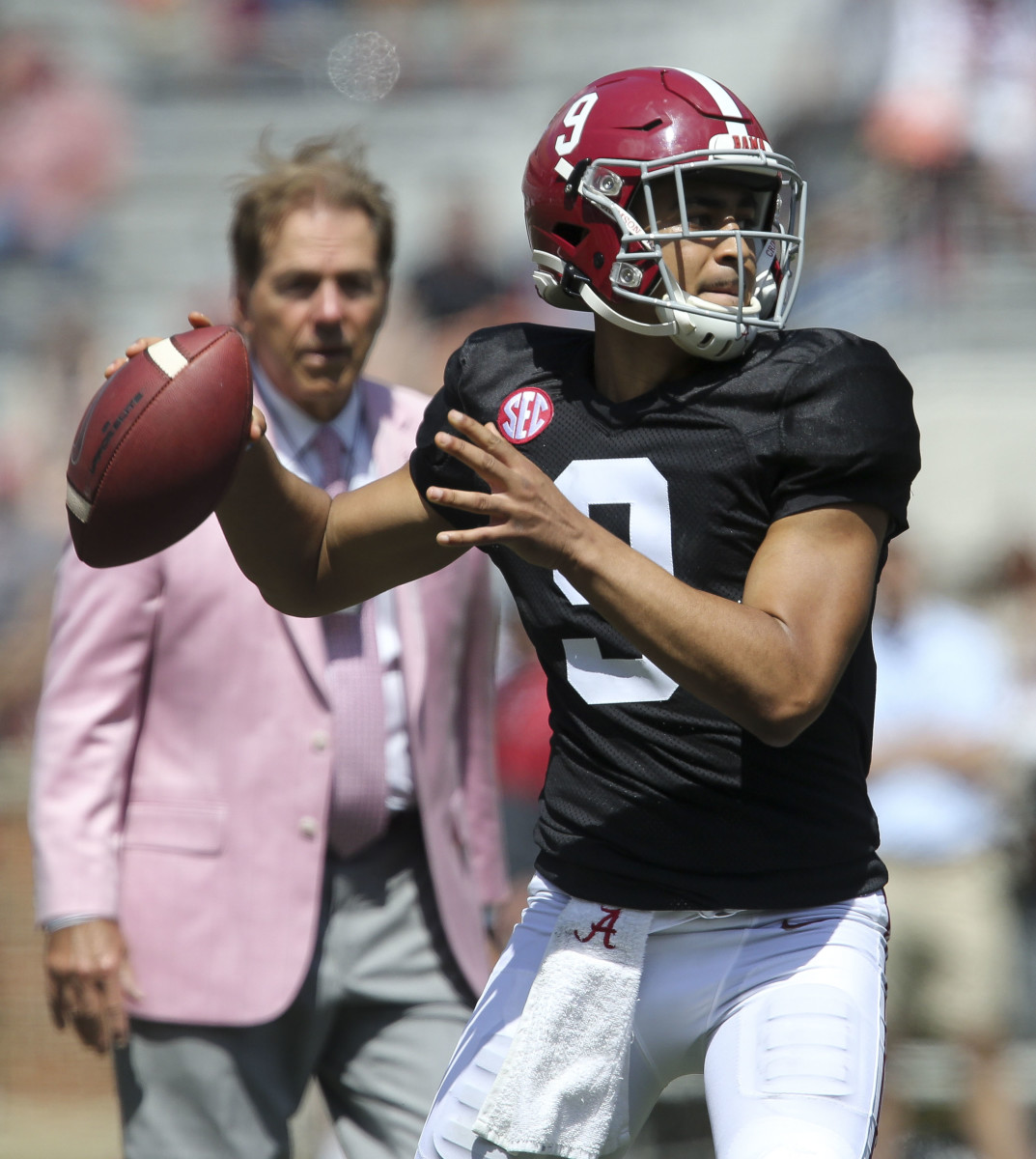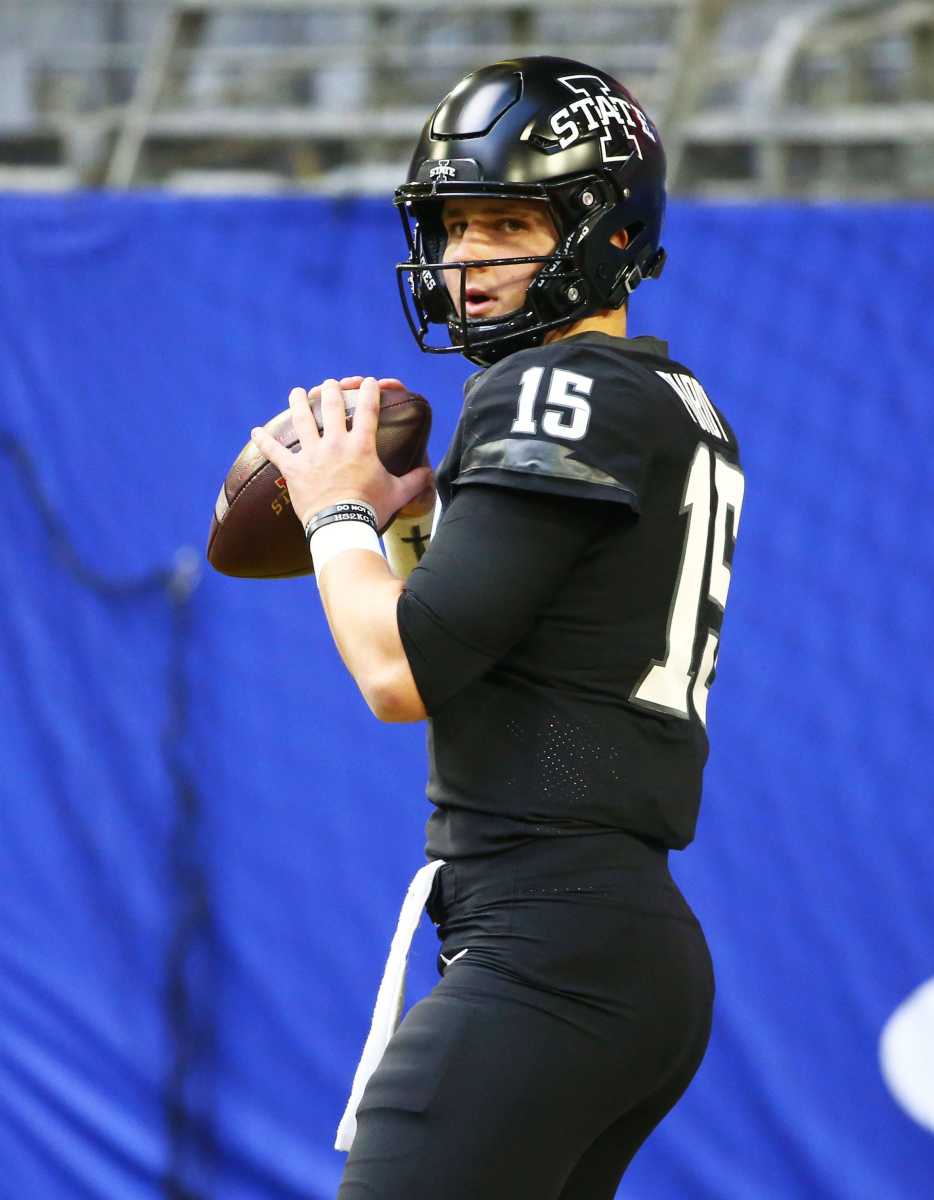UCF Quarterback Dillon Gabriel, Heisman Hopefuls, and Media Perception

There’s a great deal of hype that surrounds certain players within college football, and much of that hype extends from playing at particular college football programs rich in tradition.
UCF quarterback Dillon Gabriel is a microcosm of a great quarterback that simply does not receive the attention of enough Heisman voters, nor does he earn enough kudos for other major awards because he’s not playing at a tradition-rich program like Texas, Georgia or Penn State. This article examines that fact with quarterbacks.
The idea will be for fans to really sit down and think. How would Gabriel, or another talented quarterback, perform and be perceived if he switched college football programs? Further, do Heisman voters just look at the name on the jersey and insert the quarterbacks from the truly top schools into their Heisman hopefuls list?
Let’s start with Gabriel, then move on to a few more examples of good quarterback play, as well as where those signal callers play their college football and how they would be perceived if they changed college football programs. There are some obvious trends.
Gabriel Can Spin It, Perception Still Rules the Day
Even as a true freshman, Gabriel passed for 3,653 yards and 29 touchdowns. Forget the program name on the jersey; he was a bona fide star from the get go of his college career. While he did not receive the attention he should have, Gabriel was already one of college football’s best passers as a mere freshman.
Moving to 2020, Gabriel improved his decision making and still threw for 3,570 yards despite taking fewer risks, and also reduced his interceptions from seven to four. In 2020, his maturity and understanding of reading defenses allowed him to make better decisions and throw the football to the right player at an even higher rate than he did in 2019. Now, after two big-time seasons, he’s still not getting enough attention.
Top-Ranked School Quarterback Perception
A good comparison for Gabriel would be now Alabama sophomore Bryce Young. The two quarterbacks are smaller in stature, being about 5’11” each, and both possess uncanny accuracy. Due to Young playing for Alabama, he’s already on the Heisman lists, however, and he’s not even started a game for the Crimson Tide as he enters his sophomore season.

Young is really good folks. Really good. He earned offers from about everyone out of famed Mater Dei High School near Los Angeles, Calif. Still, no career starts, and he’s ranked ahead of Gabriel on the Heisman list?
That’s media bias at its finest.
Now, there’s no intent to discount Young. He’s going to be very good in an Alabama uniform. It’s just that there’s been a very strong trend to not only award the Heisman Trophy to quarterbacks, but also to quarterbacks of very specific schools. You know, the ones that finish high in the final college football regular season rankings (the Heisman is awarded before the playoffs begin).
Gabriel is a great example of being overlooked, but he is not alone.
In Aimes, Iowa There is a Lesson to Be Learned
Last season, Iowa State quarterback Brock Purdy threw for 2,750 yards and 19 touchdowns, while completing 66.6% of his passes, within a well balanced offensive attack. The Cyclones averaged 241.1 yards passing per game, as well as 195 yards per game on the ground.
How well would Purdy do if he played with the same skill players that trotted onto the field at Clemson, Texas A&M, Ohio State, Southern California, Florida, or North Carolina?

Yes, Iowa State had good options for Purdy to pass the football, but not truly comparable the aforementioned schools. That’s why the Heisman Trophy, like many other awards, should get an overhaul in thought process from Heisman voters.
There’s too much about overall team talent and sheer numbers and not enough substance regarding what a player accomplishes with what’s around that player. Maybe Purdy does not deserve to win the Heisman this upcoming season, but that does not mean that Purdy, or players like him, should not be more strongly considered. Just food for thought.
VegasInsider.com Heisman Rankings Show a Clear Trend
In order of likelihood to win the Heisman, the top five candidates would be Spencer Rattler of Oklahoma, the previously mentioned Young from Alabama, DJ Uiagalelei from Clemson, JT Daniels from Georgia, and CJ Stroud from Ohio State. This list provides two specific categories.
All five players are quarterbacks, and all five play for schools coming into the 2021 college football season ranked in the top eight by practically every major news outlet in the country. Is the Heisman Trophy still about the best player, or should it change its name and say the best quarterback from a top-ranked school?
As a side note, Uiagalelei, Young, and Stroud have all just briefly played. None of them are coming off monster seasons to gain steam from Heisman voters. Hard to argue against voters simply looking at the schools these young men play for being a primary reason as to why a sports betting organization would rank the odds as it does. Keep in mind, VegasInsider.com is like any other sports book.
They are out to make money. They do their research as to where the voters are leaning before simply placing odds on the board. There’s a reason the rankings are listed as noted above (and they are consistent with other organizations).
Final Thoughts
College Football has many odd trends and traditions. It’s part of the equation for why so many love the sport and all of its excitement. There are still areas that need to be overhauled, and the way Heisman voters go about deciding which player is the best in college football is at or near the top of the board for changes that are needed.
